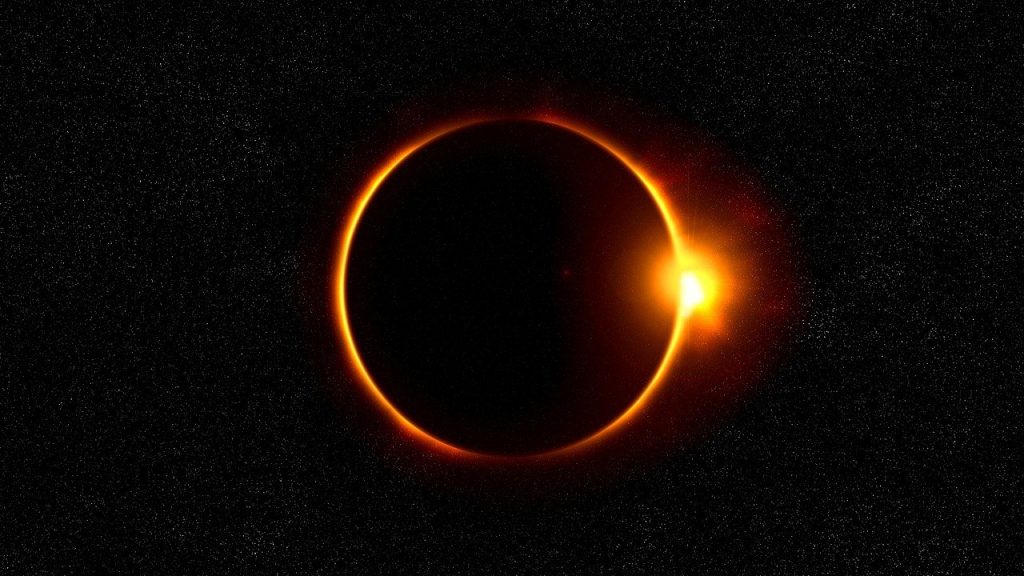A solar eclipse will be visible for most of the Northern Hemisphere on Thursday 10 June 2021.

This celestial event is an ‘annular eclipse’, and happens when the Moon is further away from the Earth, so looks smaller. This means as the Moon moves across the face of the Sun, it does not fully cover it. A thin disc of light will still be visible shining around the Sun, a ‘ring of fire’.
The best place to view this eclipse is the Arctic, but they only have a small population.
A good portion of the rest of the world will still be able to view a partial eclipse though. This includes parts of Northern America and Canada, Greenland, and areas of Europe and Asia. They will see the Moon cover over a chunk of the Sun.
The best place to watch in the UK is up in Scotland, particularly the Islands such as the Shetlands or Isle of Lewis. From here people will see the largest percentage of coverage of the Sun, with about 40% of it eclipsed.
Meanwhile, further down south, for example in London, people will see around 20% of the star covered over by the Moon.
If you are planning to witness the event, advice is always not to look directly at the Sun with the naked eye. Doing so can cause serious damage. You should view the sky using protective equipment, such as special glasses, projector or telescope. Or keep a lookout for organised events in your area. Local astronomy clubs are likely to be out, and will show people how to view the eclipse safely.
‘Path of annularity’
The “path of annularity”, the track of the Moon across the Earth’s surface where it sits completely within the Sun’s disc, starts at sunrise in Ontario, Canada, at 10:49 BST. Then it sweeps across the top of the globe, before eventually reaching Russia’s Far East. It lifts off the planet at sunset at 12:33 BST.
The Nares Strait, the channel between the Canadian islands and Greenland, will enjoy the longest duration eclipse, at nearly four minutes. From there, 90% of the Sun will be blocked out, although there won’t be many around to view it.
The Moon’s orbit around the Earth is elliptical, meaning it is not perfectly round, so the satellite’s distance from the planet varies. This difference causes the size the Moon looks to fluctuate by around 13%. As a result, not every eclipse can be total.
If the Moon eclipses the Sun on the near side of its orbit, a total eclipse occurs as it totally blocks it out. But if the Moon eclipses the Sun on the far side of its orbit, it won’t completely cover it, resulting in a “ring of fire”, or annulus of sunlight. Either way, it is an amazing spectacle to behold.
Thank you for reading Solar Eclipse: How to see the ‘Ring of Fire‘

Looking for a storage solution for your garden furniture, tools and belongings? Look no further – Garden Sheds at affordable prices.